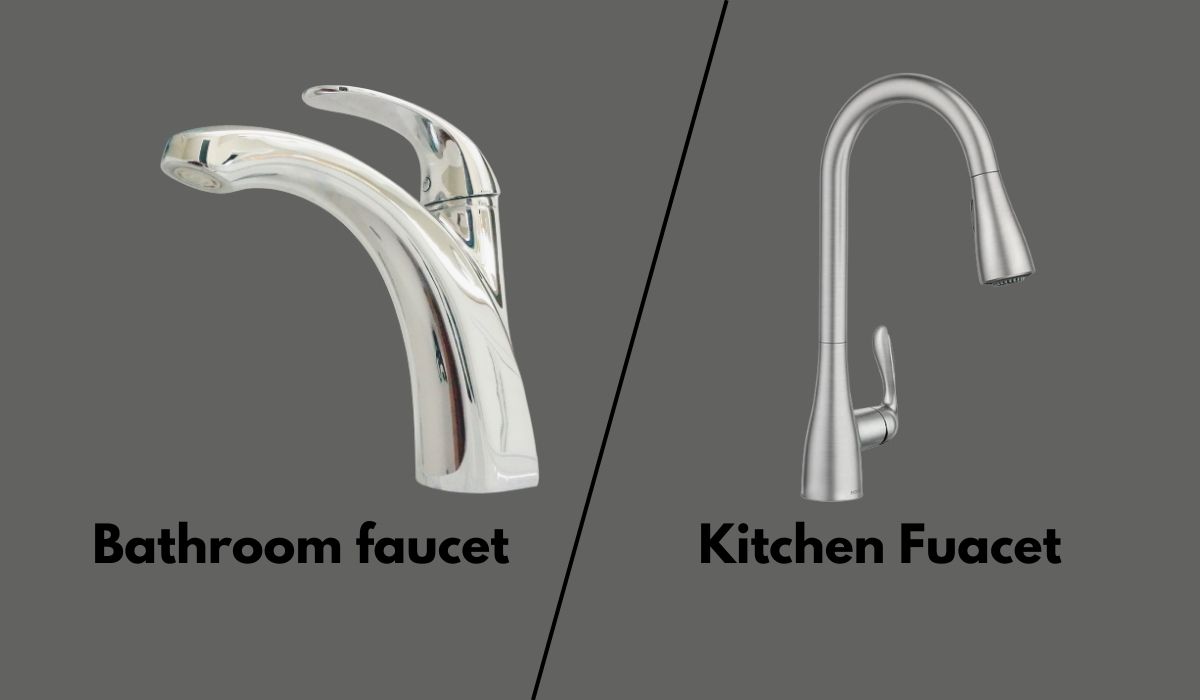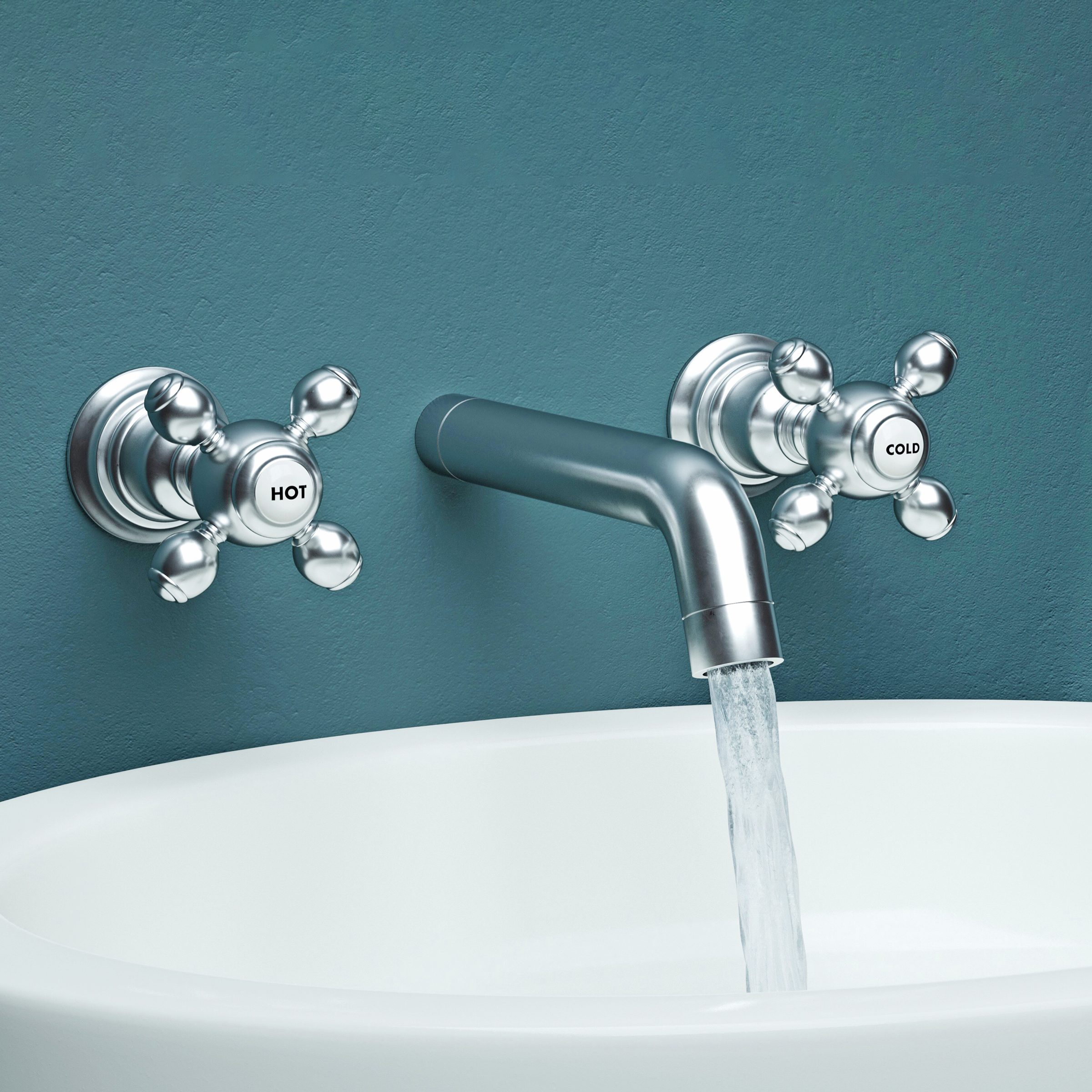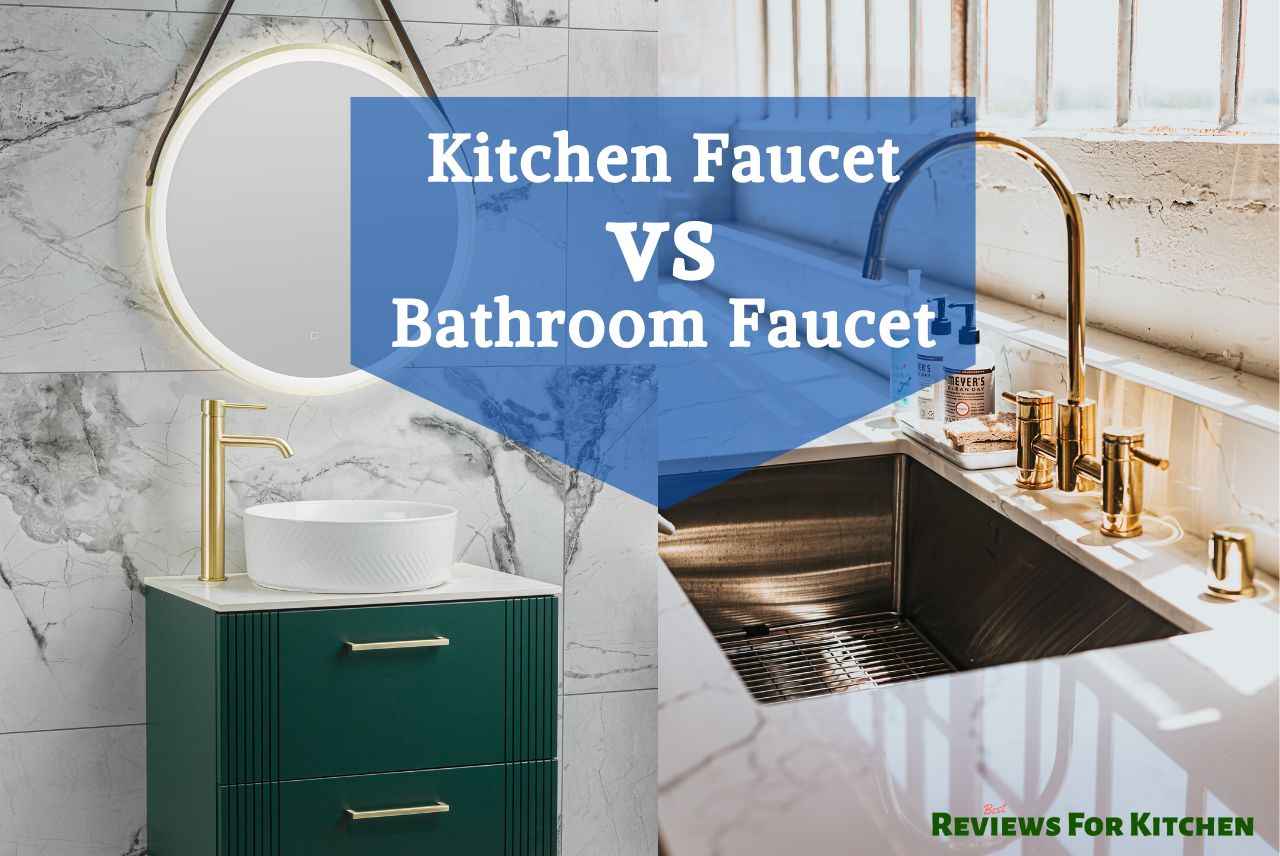Functional Differences: Kitchen Faucet Vs Bathroom Faucet

Kitchen and bathroom faucets, while both delivering water, are designed with distinct functionalities to cater to the unique demands of their respective spaces.
Spray Settings and Flow Control
The types of spray settings and flow control mechanisms are crucial for both convenience and efficiency.
- Kitchen faucets often feature multiple spray settings, including a powerful jet stream for filling pots and a gentle aerated stream for rinsing dishes. These settings are controlled using a lever, button, or even a pull-down sprayer.
- Bathroom faucets typically prioritize a smooth, consistent flow of water for handwashing and showering. They often have a single spray setting, although some models offer a separate hand shower attachment for more versatility.
Spout Design and Reach
The spout design and reach of a faucet play a significant role in its usability.
- Kitchen faucets often have taller spouts with a wider reach, allowing for easy filling of large pots and pans. Some models feature pull-down or pull-out spouts for greater flexibility.
- Bathroom faucets usually have shorter spouts with a narrower reach, focusing on providing water for handwashing and sink-based tasks. They are often designed to be aesthetically pleasing and complement the overall bathroom design.
Temperature Control
The temperature control mechanisms of kitchen and bathroom faucets also differ.
- Kitchen faucets often use a single-lever design, where a single handle controls both hot and cold water flow. This allows for easy and precise temperature adjustment.
- Bathroom faucets may use a single-lever or two-handle design, depending on the style and preference. Two-handle designs offer separate control over hot and cold water, which can be helpful for precise temperature adjustments, especially for bathing.
Design Considerations

The aesthetics of kitchen and bathroom faucets are distinct, reflecting their unique functions and environments. Style, finish, and material play crucial roles in creating the desired ambiance for each space. Design trends influence the selection of faucets, reflecting evolving preferences and technological advancements.
Style and Finish
The style of a faucet can significantly impact the overall design of a kitchen or bathroom. Kitchen faucets often feature a more industrial or utilitarian style, while bathroom faucets tend to be more elegant and decorative.
- Kitchen faucets are often characterized by their practicality and functionality. They frequently feature a single-handle design for easy operation, and their finishes are often chosen for their durability and resistance to stains and scratches. Popular finishes for kitchen faucets include brushed nickel, stainless steel, and oil-rubbed bronze.
- Bathroom faucets, on the other hand, offer a wider range of styles, from traditional to modern, with finishes that complement the bathroom’s overall aesthetic. Popular finishes for bathroom faucets include chrome, polished nickel, and matte black.
Material
The material used for a faucet also impacts its appearance and durability.
- Kitchen faucets are typically made from brass, stainless steel, or a combination of both. Brass is a durable and long-lasting material that can be easily polished and maintained. Stainless steel is also a durable and corrosion-resistant material that is often used for its modern aesthetic.
- Bathroom faucets are often made from brass, nickel, or chrome. Brass is a popular choice for its durability and versatility, while nickel and chrome are known for their resistance to corrosion and tarnish.
Spout Height
The height of a faucet’s spout is a significant design consideration, particularly in the kitchen.
- Kitchen faucets with tall spouts are ideal for filling large pots and pans, while shorter spouts are better suited for smaller tasks, such as washing dishes.
- Bathroom faucets often feature shorter spouts, as they are primarily used for handwashing and brushing teeth.
Handle Styles
The style of a faucet’s handle can also impact its overall design.
- Kitchen faucets commonly feature single-handle designs for ease of use. Some kitchen faucets feature dual handles, which offer greater control over water temperature and flow.
- Bathroom faucets often feature lever handles, which are easy to operate, or cross handles, which provide a more traditional aesthetic.
Installation Methods
The installation method of a faucet can also impact its design.
- Kitchen faucets are typically installed on the countertop, while bathroom faucets are often installed on the wall.
Installation and Maintenance

Installing and maintaining your kitchen and bathroom faucets is essential for ensuring their longevity and functionality. Understanding the steps involved and the tools needed will help you complete these tasks efficiently and effectively.
Installing Kitchen and Bathroom Faucets
Installing a kitchen or bathroom faucet involves several steps, requiring specific tools and materials. Here is a detailed guide:
Tools and Materials
- Adjustable wrench
- Channel-lock pliers
- Plumber’s tape (Teflon tape)
- Screwdriver (Phillips and flathead)
- Basin wrench
- Level
- New faucet
- Installation instructions
- Optional: Gloves, safety glasses
Step-by-Step Installation Guide
- Turn off the water supply. Locate the shut-off valves for the hot and cold water lines under the sink. Turn the valves clockwise to completely shut off the water flow.
- Disconnect the old faucet. Use the adjustable wrench and channel-lock pliers to loosen and remove the old faucet’s supply lines and mounting nuts.
- Prepare the sink. Clean the sink’s mounting holes and remove any debris or old sealant.
- Install the new faucet’s mounting plate. Place the new faucet’s mounting plate over the sink’s holes and secure it with the provided screws.
- Connect the supply lines. Wrap the threads of the new faucet’s supply lines with plumber’s tape to prevent leaks. Connect the supply lines to the faucet and tighten them with the adjustable wrench.
- Connect the supply lines to the shut-off valves. Connect the other ends of the supply lines to the shut-off valves and tighten them with the adjustable wrench.
- Install the faucet. Position the faucet on the mounting plate and secure it with the mounting nuts. Ensure the faucet is level using a level.
- Turn on the water supply. Slowly turn the shut-off valves counterclockwise to turn on the water supply. Check for leaks at the connections.
- Test the faucet. Turn on the faucet and test its functionality. Ensure the water flows properly and there are no leaks.
Maintenance of Kitchen and Bathroom Faucets, Kitchen faucet vs bathroom faucet
Regular maintenance is crucial for extending the lifespan of your kitchen and bathroom faucets. Here are some essential tips for maintaining your faucets:
Cleaning
- Clean regularly. Wipe down your faucet with a soft cloth and mild dish soap to remove dirt and grime. Avoid harsh cleaners or abrasive scrubbers.
- Clean aerator. The aerator is the small nozzle at the end of the faucet spout that mixes air with water. Remove the aerator by unscrewing it, clean it with a toothbrush and vinegar solution, and reattach it.
- Clean cartridges and valves. For faucets with cartridge or valve systems, periodically remove and clean these components according to the manufacturer’s instructions.
Troubleshooting and Repair
- Leaking faucets. Leaking faucets can be caused by worn-out washers, O-rings, or cartridge seals. Replacing these components often solves the issue.
- Low water pressure. Low water pressure can result from clogged aerators, mineral buildup in the faucet, or problems with the shut-off valves. Cleaning the aerator or replacing the cartridge may resolve the issue.
- Clogged spray heads. Clogged spray heads in kitchen faucets can be cleaned by removing the head and soaking it in vinegar solution.
Kitchen faucet vs bathroom faucet – Choosing the right faucet for your kitchen or bathroom is important, as it impacts both functionality and style. While kitchen faucets often prioritize practicality, bathroom faucets tend to focus on elegance and design. If you’re looking for a beautiful and functional bathroom faucet, the pfister brea bathroom faucet is a popular choice.
It’s sleek, modern, and offers a range of features to suit different preferences. So, when deciding between kitchen and bathroom faucets, remember to consider your needs and desired aesthetic.
Choosing the right faucet for your kitchen or bathroom can be a fun adventure! While kitchen faucets are often designed for functionality and ease of use, bathroom faucets are all about style and elegance. If you’re looking for a classic touch, you might want to consider ceramic cross handle bathroom faucets , which bring a touch of vintage charm to any bathroom.
And don’t forget, both kitchen and bathroom faucets come in a wide variety of styles, finishes, and features, so you’re sure to find the perfect one for your home!